Vintage drum gear: Sonor kits
Two classic sets from the long-standing German drum company

Sonor Swinger Kit
Each month Rhythm Magazine tracks-down and checks-out vintage gear in order to marvel at a bit of drum-making history.
Here we investigate two kits from Germany’s Sonor - probably the oldest of the surviving major drum companies, dating back to 1875. This first kit's owner is self-described ‘weekend warrior’ Richard Thomas from Rotherham.
Richard bought the drums last year from Galaxy Music in Castleford, West Yorkshire. He describes Galaxy as an Aladdin’s cave specialising in vintage gear. “The owner, Steve Galaxy, called me saying he’d found an old German kit in a Ringo-type finish. I loved the look of it and the price was fair.
“I’d never seen a Sonor in this finish before; it reminded me of Ludwig’s bold ’70s blue and black ‘bowling ball’-type oyster finish.
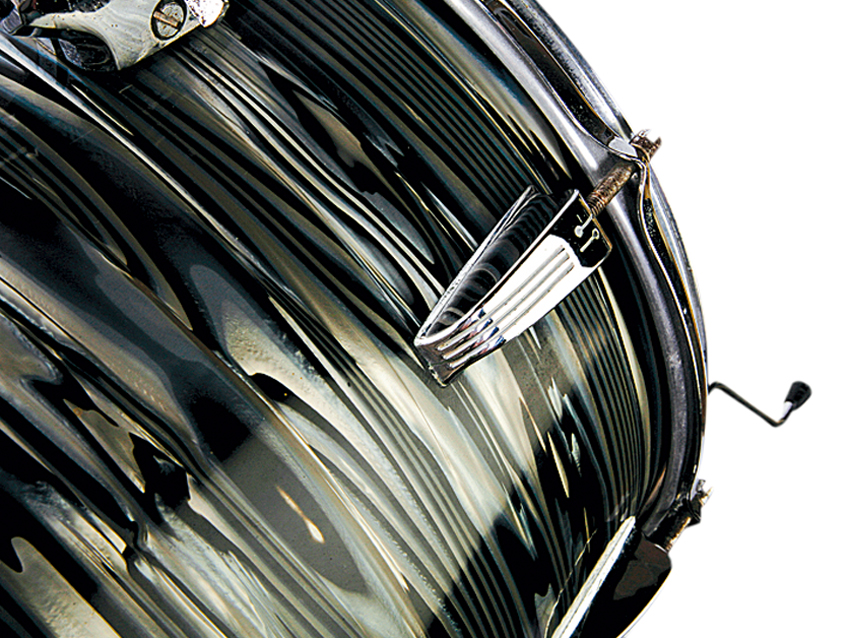
Sonor Swinger Kit
“I’ve since done my homework,” continues Richard. “The kit is a K130 Swinger in Blue Stripe (Bn), which can be seen on Sonor’s own museum website. The kit, including metal snare and stands, originally retailed for £149 and 10 shillings.
“It’s a standard 22x14-inch, 13x9-inch and 16x16-inch with thin shells. Overall, the drums are extremely light and to my surprise the lugs are made from plastic. They work fine and have a similar look to Ludwig’s ‘Classic’ lug.
“The bass drum hoops are the cheaper metal variety and hollow, so they ring a bit. The spurs are also lightweight and are the straight retractable type, about 8 or 10mm in diameter.
“As a left-handed player, what I’ve always liked is the tom holder, which is mounted centrally on the bass drum and works for both left- or right-handed players.”
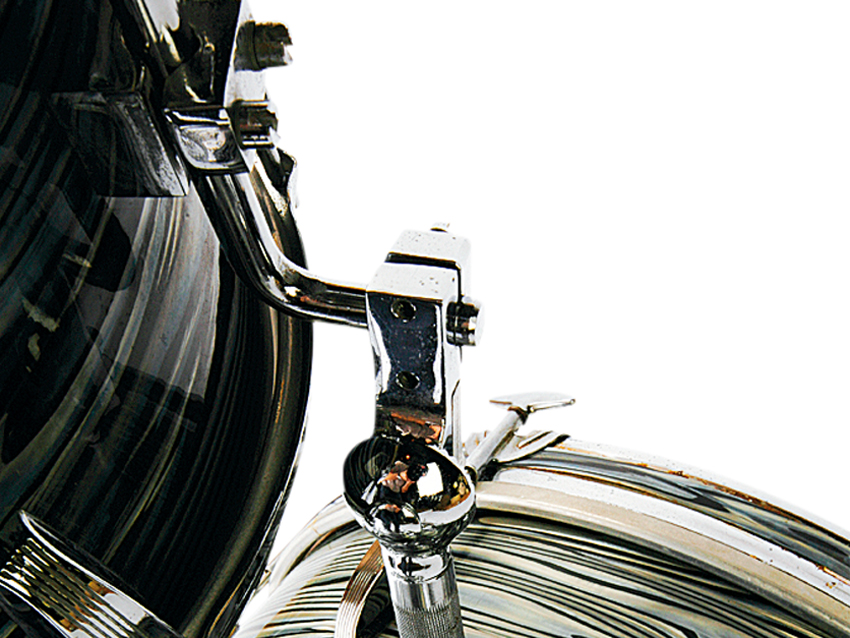
Sonor Swinger Kit
Richard wondered if the kit might have been made in the Far East, so we asked German drum expert Fritz Steger for the lowdown. He tells us that, although the Swinger was a budget series, “the shells were the same 6-ply beech used on Sonor’s expensive lines.
“The set was a reaction to Japanese drum sets, but was definitely assembled in Germany. The lugs were provided by Rimmel Drums from Kempten (in Bavaria), but were made under their supervision in Taiwan.
“The bass drum hoops also came from Rimmel. They were made on the same machines that Rimmel made wheel rims on for the bicycle industry, just turned the other way round!”
Richard is happy though. “I’ve always enjoyed playing the kit, and members of the audience often comment that it’s a nice looking ‘Beatles kit’. Little do they know it’s never been to the clubs of Liverpool or, despite its German origins, even Hamburg.”
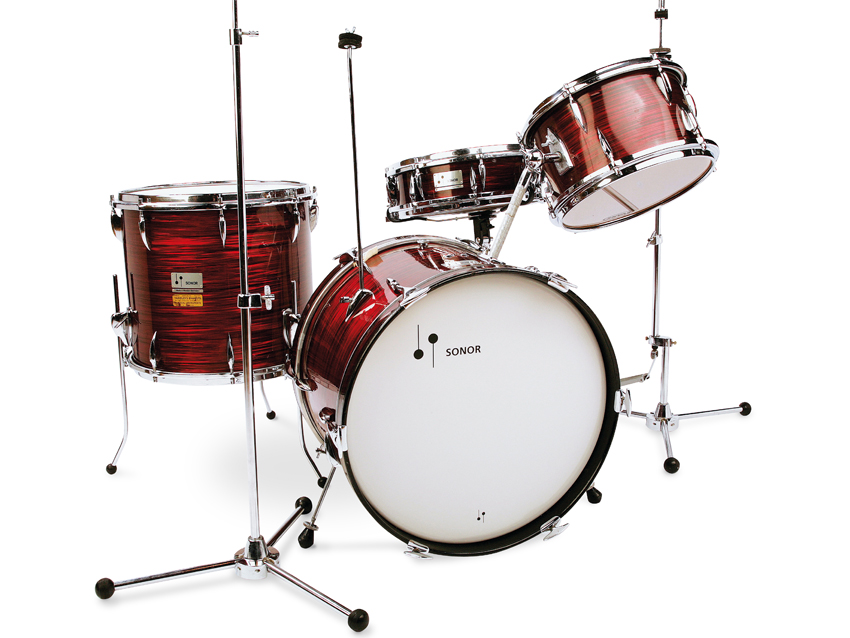
Sonor New Beat/Chicago Star Kit
What an elegant beauty this kit is. It belongs to Jeremy Peake from historic Ely in Cambridgeshire.
Although the kit looks unified it was actually assembled piecemeal. “Fellow drummer Chris Lee gave me the toms because I already had another Sonor kit,” Jeremy explains.
“I liked them so much I went out and found a matching bass and snare. My bass drum originally belonged to Brian Glascock of ’60s group The Gods.”
Sonor kits were imported to the UK and USA by Hohner, first arriving in the late ’50s, as did Trixon, the other great West German brand. To woo American custom the standard four-piece kit was called the Chicago Star, while smaller kits were termed New Orleans, Harlem and Memphis Stars.
Sonor’s tom sizes were somewhat unusual, with 13x8-inch and 16x14½-inch toms coupled with the more familiar 20x14-inch bass and 14x5-inch snare.
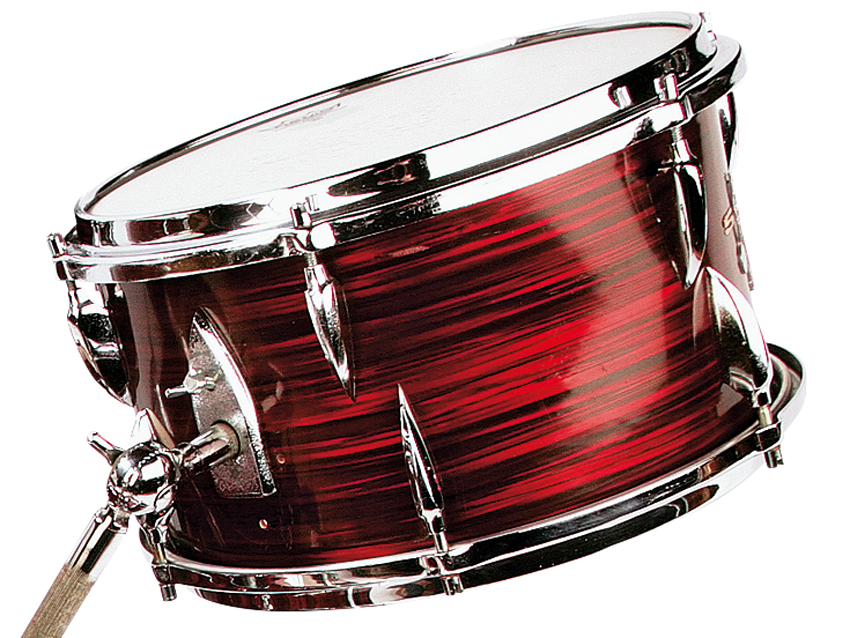
Sonor New Beat/Chicago Star Kit
Jeremy’s drums are all from the early or mid-’60s, when the oblong silver badge took over from the previous twin mallets logo.
“My bass drum is dated June 1963,” Jeremy reveals. “And the 13-inch tom is stamped 210 inside (indicating the 10th month of 1962) and has the metal twin mallets logo, so is slightly older than the rest of the kit. It also has a metal letter S pressed into it, which I haven’t seen anywhere else.”
While the toms and bass drum have vertical inner plies and reinforcing rings, the six ply snare drum has a horizontal inner ply with no reinforcing. The drums are finished in Wine Marble Stripe, a popular wrap in the UK.
Legendary Sonor quality is already in evidence with the triple chrome-plated cast steel hardware and fittings, and machine-threaded bolts. Hoops are also one-piece, die-moulded steel, with the top flange turned in, not out.
The snare has a sophisticated parallel action with 18 steel wire ‘spirals’. The pointed lugs are so elongated that they have to be overlapped on both the snare drum and also on the small tom.
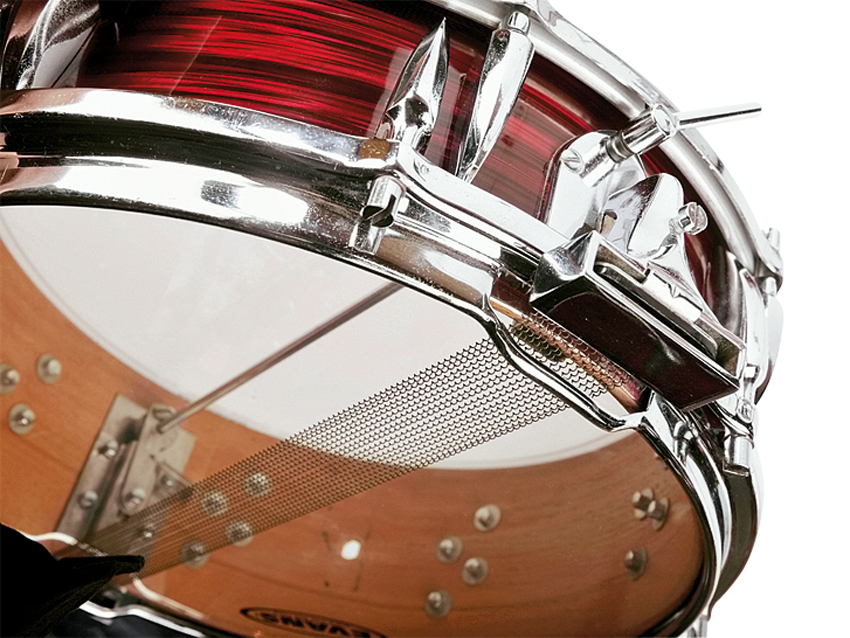
Sonor New Beat/Chicago Star Kit
“My Sonor is equivalent to the Chicago Star (K180) outfit marketed in the UK and also known as the New Beat,” continues Jeremy.
“The UK bass drums (like mine) were for some reason usually 12-lug instead of 16. The earlier ones, again like mine, are three-ply beech with reinforcing rings and rounded bearing edges. I found them on eBay, and it turned out someone else had some stands and pedals.
“The stands are late ’60s I think, extremely light with a lovely, simple design. The legs pull out and are sprung, like microphone stands. There’s probably room for something like them in the market today.
“I gig the kit frequently, playing blues and rockabilly. I alternate it with my English Rogers kit. They always attract attention and have a rich, distinctive sound.”
Vintage Gear continues each month in Rhythm Magazine.

Geoff Nicholls is a musician, journalist, author and lecturer based in London. He co-wrote, co-presented and played drums on both series of ‘Rockschool’ for BBC2 in the 1980s. Before that he was a member of original bands signed by Decca, RCA, EMI and more. ‘Rockschool’ led to a parallel career writing articles for many publications, from the Guardian to Mojo, but most notably Rhythm magazine, for which he was the longest serving and most diverse contributor.